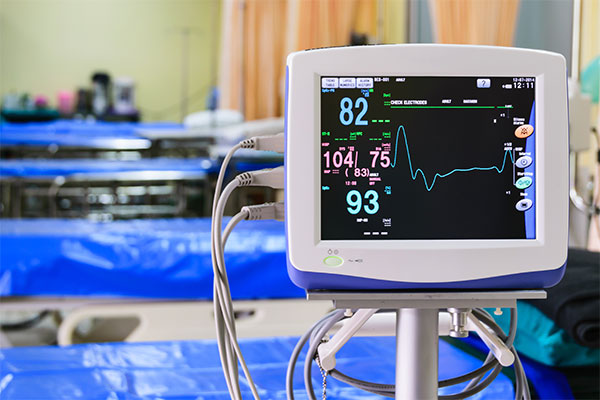Giving instructions, suggestions and requesting things is a daily aspect of working with patients. In order to say something like: “sit down, please”, “follow me”, “wait here for a moment”, “breathe deeply”, “breathe normal”; you have to use the command form in Spanish.
So in this free Medical Spanish lesson, you will learn how to give Usted commands in Spanish with everyday verbs you would use in the clinic: Mandatos Usted para español médico en la clínica.
In this free medical Spanish lesson you will learn:
- Command tense endings: -AR, -ER & -IR verbs
- Reflexive verbs in the imperative
- -car, -gar, -zar Verbs in the imperative
- Irregular verbs in the imperative (usted)
Here is the Usted Commands for Medical Spanish lesson that I taught on YouTube and to our Facebook group:
Subscribe to our YouTube Channel to see all of our lessons and get the latest videos right away!
Mandatos Usted – Usted Commands

Every time you give a quick little suggestion, a command or an instruction in the clinic (i.e.: follow me, take a seat, etc.), and you want to do the same in Spanish, you need to start using EL IMPERATIVO.
El imperativo, that is to say, the command form, can be used with the forms “usted” and “tú”. In this lesson we are going to study the Usted Commands.
Ejemplos del Imperativo (formal)
- Tome asiento por favor: Take a seat, please.
- Espere aquí y le llamamos pronto: Wait here, we’ll call you soon.
- No coma por 12 horas antes de la cirugía: Don’t eat for 12 hours before the surgery.
- Beba mucha agua con este medicamento: Drink a lot of water with this medication.
- Suba las escaleras con la pierna buena primero: Go upstairs with the good leg first.
- No resista la presión que aplico: Don’t resist the pressure that I’m applying.
- Acuéstese boca arriba por favor: Lie down on your back, please.
- Lávese las manos varias veces por día: Wash your hands several times a day.
- Quítese los zapatos y la chaqueta pero no se quite los pantalones ni la camisa por favor: Take off your shoes and jacket, but please keep your pants and shirt on.
You are probably wondering how these verbs are formed since their normal conjugation are quite different. Don’t worry, there is an explanation 🙂
Command Tense Endings
For the Usted Command, you need to follow 3 simple rules:
- Go to the “yo” form of the present tense.
- Drop the “o”
- Add the opposite ending
- -AR > e
- -ER & -IR > a
-AR Verbs
Let’s apply the Usted command rule to the verb RESPIRAR (to breathe)
- Yo form: respiro
- Drop the “o”: Respir
o - Add the opposite ending: Respire
| Usted command: Respire | Ustedes command: Respiren |
-ER/-IR Verbs
In this case, we are going to use the verbs COMER (to eat) and RESISTIR (to resist) as examples.
- Yo form: como / resisto
- Drop the “o”: com
o/ resisto - Add the opposite ending: coma / resista
| Usted command: Coma / Resista | Ustedes command: Coman / Resistan |
Verbos reflexivos en el imperativo – Reflexive Verbs in the Command Form
Now you know how to get the command form conjugation, it’s time to talk about the reflexive verbs.
As you might notice on the first examples, the command form for the reflexive verbs is different for the affirmative and the negative.
Affirmative commands:
For the affirmative commands, “se” is attached at the end of the verb.
- Usted: siéntese (take a seat)
- Ustedes: siéntense (sit down you all)
Negative commands:
For the negative commands, the “se” comes before the verb.
- Usted: no se siente (don’t sit down)
- Ustedes: no se sienten (don’t sit down you all)

Verbos -car, -gar, -zar en el imperativo
You may recognize -car, -gar, -zar verbs and their irregular endings in the “yo” form of the preterite tense. They’re tricky in the usted command form as well.
The good news is the following pattern applies for both forms so the changes you need to make to the verbs are almost the same.
Let’s see how you can do it:
- Buscar (to look for) car > que
- Usted: busque
- Ustedes: busquen
- Pagar (to pay): gar > gue
- Usted: pague
- Ustedes: paguen
- Empezar: -zar > -ce
- Usted: empiece
- Ustedes: empiecen
Note: The verbs “Empezar” and “Comenzar” (both means to begin or to start) do not fully follow this rule. The usted command forms are “empiece” and “comience” (notice the extra “i” after the root of the verb) but the preterite tense forms are “comencé” and “empecé” (without the “i”).
Verbos irregulares en el imperativo – Irregular Verbs in the Command Form
There also are some irregular verbs you probably use to give instructions in the clinic, so here you can find some of them in the usted command form:
- Dar (to give) > dé / den
- Estar (to be) > esté / estén
- Ir (to go)> vaya / vayan
- Saber (to know) > sepa / sepan
- Ser (to be) > sea / sean
Su tarea – Your Homework
- Review the notes & vocabulary
- Identify additional points and topics to discuss with patients
- Let me know if you need help 🙂
- Remember to keep it simple if you need to
- Ask for help in the comments below
- Give it a try with your patients!
Now it’s your turn! I packaged all of this vocabulary in Spanish into some flashcards for you to study.
I packaged all of this into easily downloadable .pdf notes–Get your copy for free today!
Related Lessons:
How to Take Vital Signs in Spanish
Do you ever have to take vital signs or communicate to your patients about them…
Tú Commands in Spanish for Healthcare and Clinical Interactions with Young Patients
Medical Spanish Tú commands are a little bit tricky. When you work with kids in…
Neurological Exam in Spanish
Learn the vocabulary and common phrasing for the Neurological exam in Spanish! This lesson covers…
33 Verbs & Useful Phrases for the Physical Exam in Spanish
In today’s Medical Spanish lesson, you will learn how to talk through the physical exam…
Head Eyes Ears Nose & Throat Exam (HEENT) in Spanish
This medical Spanish lesson focuses on talking through the Head Eyes Ears Nose & Throat…
Weight Loss and Management – Anticipatory Guidance in Spanish
In this free Medical Spanish lesson you will learn how to talk about weight loss…
Knee Pain in Spanish: Symptoms, Exam, and Diagnosis
This Medical Spanish lesson focuses on talking about Knee Pain in Spanish to your Spanish…
Keep up the good work speaking responsible Spanish to your patients! Check out our other books, classes & products to help you learn medical Spanish!
*If the link isn’t working for you, you may need to unblock pop-ups in your browser settings
Thinking About Immersion?
If you think you are ready to take the plunge with your Spanish, we would love the opportunity to work with you in Ecuador or Costa Rica during our immersion programs ?











